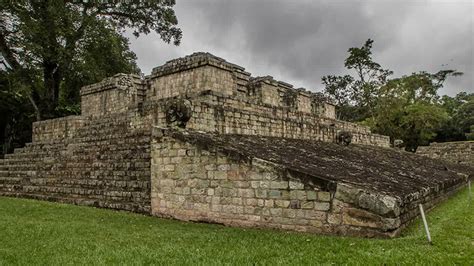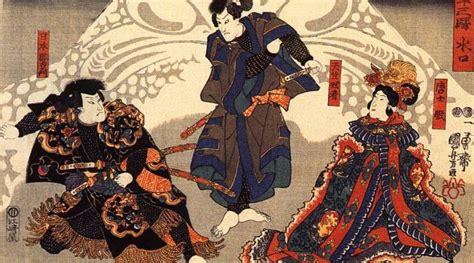Explore the ancient roots, independence movement, communist era, and revolution of Romania, leading to its modern post-communism era. Learn about Romania’s rich history.
Ancient Origins of Romania
Contents
Ancient Origins of Romania
Romania has a rich and diverse history that dates back thousands of years. The origins of Romania can be traced back to the ancient Dacian civilization, which inhabited the region as early as the 2nd century BC. The Dacians were known for their advanced metalworking skills, as well as their fierce resistance to Roman conquest.
The Roman conquest of Dacia in 106 AD brought about significant changes to the region, including the introduction of Roman culture, language, and religion. The Romans built roads, bridges, and fortresses, leaving a lasting impact on the development of the region.
Following the fall of the Roman Empire, the territory of modern-day Romania was invaded and settled by various migratory peoples, including the Goths, Huns, and Slavs. These migrations brought about cultural and linguistic changes, shaping the unique identity of the Romanian people.
The medieval period saw the emergence of the principalities of Wallachia, Moldavia, and Transylvania, each with its own distinct culture and traditions. These territories played a pivotal role in shaping the political and social landscape of Romania.
Overall, the ancient origins of Romania are a testament to the resilience and adaptability of its people, who have embraced and integrated a wide range of cultural influences throughout their history.
Romanian Independence Movement
Romania’s struggle for independence was a pivotal moment in the history of the country. The movement was marked by a series of uprisings and revolutions against the Ottoman Empire, which had controlled the region for centuries. The desire for independence was fueled by a sense of national identity and a longing for self-governance.
In the early 19th century, Romanian nationalists began to mobilize and organize efforts to break free from Ottoman rule. The movement gained momentum as Romania’s leaders sought support from other European powers, hoping to garner international recognition of their quest for independence. The Romanian Independence Movement was driven by a deep commitment to freedom and sovereignty.
After years of resistance and conflict, Romania finally achieved independence in 1877, with the help of Russia in the Russo-Turkish War. This marked a turning point in the nation’s history, as Romania was officially recognized as a sovereign state. The struggle for independence had been arduous, but the Romanian people’s determination ultimately prevailed.
The Romanian Independence Movement was a defining moment in the country’s history, shaping its national identity and setting the stage for future developments. The achievement of independence was a source of great pride for the Romanian people, marking the beginning of a new era for the nation.
The Romanian Communist Era
The Romanian Communist Era began in 1947 when the Romanian Workers Party came into power, leading to the establishment of a socialist republic. Under the leadership of Gheorghe Gheorghiu-Dej and later Nicolae Ceaușescu, Romania became a one-party state with a centralized economy. The government nationalized industries, collectivized agriculture, and suppressed political dissent.
In the early years of the Communist Era, there was a period of relative political stability and economic growth. However, dissent and resistance to the regime grew throughout the 1960s and 1970s. The regime used the Securitate, the secret police, to maintain control and suppress any opposition, leading to widespread fear and censorship.
One of the most controversial aspects of the Communist Era in Romania was the personality cult surrounding Ceaușescu. His regime was known for its extravagant spending on grandiose construction projects, while the general population suffered from food and energy shortages.
The Romanian Revolution of 1989 marked the end of the Communist Era in Romania. Mass protests and demonstrations against the regime led to the overthrow and execution of Ceaușescu. This event brought an end to 42 years of communist rule in Romania and paved the way for a transition to a democratic government.
Romanian Revolution of 1989
In the late 1980s, the people of Romania were living under the oppressive regime of dictator Nicolae Ceaușescu. His rule was marked by widespread poverty, censorship, and political repression.
The Romanian Revolution of 1989 was a series of protests and demonstrations that led to the overthrow of Ceaușescu’s government. The revolution began in the city of Timișoara and quickly spread to other parts of the country, including the capital city of Bucharest.
Thousands of people took to the streets to voice their opposition to the regime, and the protests turned violent as security forces clashed with demonstrators. In a dramatic turn of events, Ceaușescu and his wife fled Bucharest in a helicopter, only to be captured by the military and later executed.
The revolution marked the end of decades of communist rule in Romania and paved the way for a new era of democracy and freedom. It also inspired similar uprisings in other Eastern European countries, leading to the collapse of the Soviet Union and the end of the Cold War.
Today, the Romanian Revolution of 1989 is remembered as a pivotal moment in the country’s history, marking the beginning of a new era of progress and prosperity.
Modern Romania: Post-Communism
The fall of Communism in Romania marked a significant turning point in the country’s history. Following the overthrow of dictator Nicolae Ceaușescu in the Romanian Revolution of 1989, Romania underwent a period of transition as it sought to build a new political and economic system. The years following the revolution were characterized by tumultuous changes as Romania worked to establish itself as a democratic nation. The dissolution of the Communist Party led to the emergence of new political parties and the drafting of a new constitution. The country also began to align itself with the European Union and the NATO alliance as it sought to integrate into the global community.
During this period, Romania also introduced a series of economic reforms aimed at transitioning from a centrally planned economy to a market economy. These reforms included privatization of state-owned industries, deregulation, and the establishment of a social safety net. The shift towards a market economy brought both opportunities and challenges as Romania grappled with issues such as unemployment, inflation, and a growing wealth gap. Despite these challenges, Romania made significant strides in modernizing its infrastructure and improving living standards for its citizens.
One of the most significant developments during this time was Romania’s quest for EU membership. The country worked diligently to meet the criteria set by the EU for accession, including implementing legal and institutional reforms, addressing corruption, and improving human rights standards. In 2007, Romania achieved its goal of joining the European Union, marking a major milestone in its post-Communist history. EU membership brought with it numerous benefits, including access to EU funding, increased trade opportunities, and the ability for Romanian citizens to live and work in other EU member states.
In the decades since the fall of Communism, Romania has continued to grapple with the legacy of its Communist past while striving to build a prosperous and inclusive society. The country has faced challenges such as political corruption, poverty, and social inequality, but it has also demonstrated resilience and determination in pursuing a path of progress and development. As Romania looks towards the future, it must continue to navigate the complexities of post-Communist transition while remaining committed to the principles of democracy, human rights, and economic prosperity.














